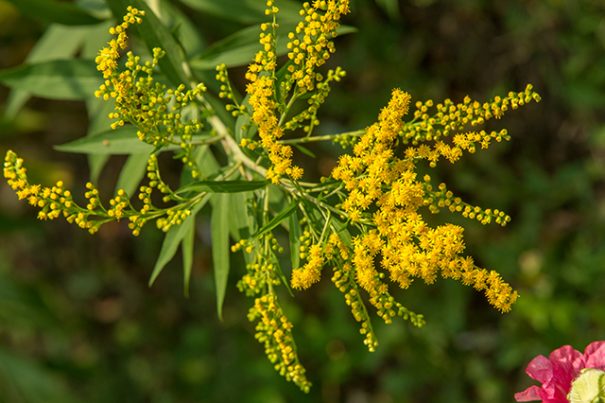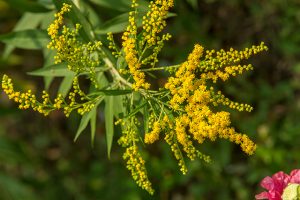
Goldenrod – sources, health benefits, nutrients, uses and constituents at NaturalPedia.com
Thursday, July 06, 2017 by Tim Wesley
http://www.naturalpedia.com/goldenrod-sources-health-benefits-nutrients-uses-and-constituents-at-naturalpedia-com.html

For a plant that was previously considered an undesirable weed, goldenrod has quite a lot of health benefits. This herb was traditionally used to dye blankets and as an ingredient in herbal tea. Mostly found in disturbed habitats — along roadsides or waste ground — goldenrod is not as popular as other plants. It is considered an invasive specie in various parts of Europe and can be found in the wild. But what some may not know is that goldenrod is great for the body.
List of known nutrients
- Bioflavonoids
- Diterpenes
- Inulin
- Kaempferol
- Quercetin
- Resin
- Rutin
- Saponin
Medicinal uses for goldenrod
Goldenrod is pretty versatile. It is used as an effective coloring agent for blankets and in leather-making. It was also used in traditional Chinese medicine where the seeds are used to provide provide relief from gas that is associated with nervous tension. It was also used as a treatment for cholera, bladder stones, kidney stones, whooping cough, urinary infections, and even dysentery. In the Middle East, it was used for cystitis, gout, and benign prostatic hypertrophy (BPH).
Today, goldenrod is still helpful in treating and preventing certain types of illnesses. The presence of flavonoids will benefit the cardiovascular system. Antioxidants help improve blood circulation and reduce blood pressure. Normal blood pressure and improved blood circulation (the result of healthy blood vessels) will keep you safe from strokes and heart attacks.
One study at a German university discovered that compounds found in leaves, called saponins, are toxic to tumor cells. Further studies showed that goldenrod leaves can fight cancer cells and may have positive effects on prostate, breast, lung, and melanoma cancers. Findings also showed that the compounds found in goldenrod can be used for chemotherapy drugs.
In addition, the herb contains glycosides which possess antifungal properties, making the plant an effective treatment for Candida and Cryptococcus. It would follow that goldenrod would be a good cure for urinary tract infections. It can aid in the release of mineral build-up to avoid kidney stone formation. Its diuretic property makes this tuber ideal for detoxifying the body. It is helpful in flushing out toxins that can harm the body. Aside from its antifungal properties, goldenrod also has anti-bacterial properties that help provide relief from seasonal allergies and even toothaches and gum problems.
Body systems supported by goldenrod
Incorporating goldenrod in your diet will have tremendous benefits to your health. This unassuming tuber is packed with nutrients that will improve the different body systems. Its healing properties will make sure your urinary tract is healthy and free from infections or kidney stone formation. At the same time, goldenrod can relieve stomach discomfort and ensure the gut has an abundance of healthy bacteria.
You’ll be grateful for this herb because it is good for the heart. Compared to green tea, goldenrod has more antioxidants, which means it is more potent against harmful microorganisms that can cause heart ailments. It aids in circulation and ensures the heart is protected against diseases.
Ways to use goldenrod
You might be wondering how else you can enjoy goldenrod aside from simply boiling it. There are various ways to enjoy this tuber. You can use it as tea or cut into thin slices to make chips. Here is one delicious goldenrod recipe you might be interested in trying at home.
Summary
Goldenrod can prevent swelling.
Goldenrod can soothe the urinary tract and prevent kidney stone formation.
Goldenrod can detoxify the body naturally.
Goldenrod will lower blood pressure and improve blood circulation.
Goldenrod will prevent and cure yeast infections.
Goldenrod can provide relief from seasonal allergies.
Sources include
Herbs-Herbal-Supplements.Knoji.com
Tagged Under: Tags: Goldenrod






